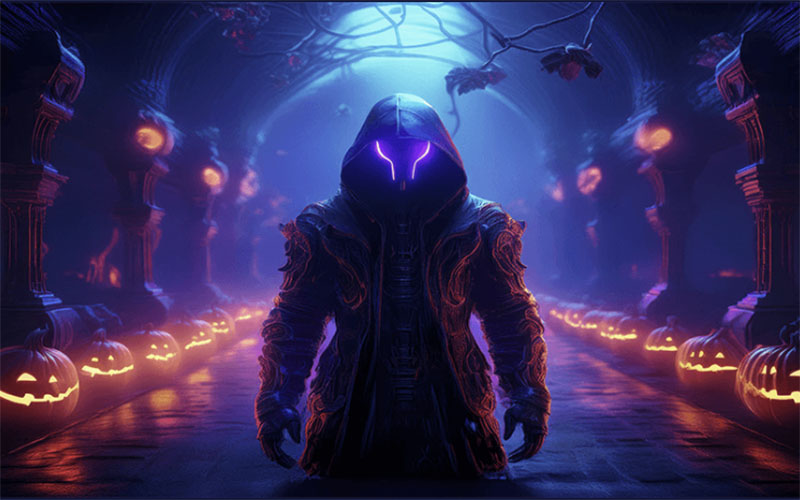
Halloween Cyber Threats Report
Cyber Street’s Nightmare: Halloween Exposes Fresh Cyber Threats
As Halloween nears, we usually consider outfits, spooky dwellings, and lively parties. However, cybercriminals see it as a chance to carry out fresh attacks by taking advantage of the festive mood and lack of focus. This year’s Halloween Cyber Threat Report reveals a variety of concerning cyber dangers, such as complex phishing schemes, focused ransomware, and IoT susceptibilities, which heighten the fear factor this season. Individuals and businesses should be aware of what they need to do to protect themselves from these “digital monsters.”
Halloween celebrations provide an opportunity for cybercriminals to engage in social engineering tactics, tricking people into divulging sensitive information.
Phishing continues to be a prevalent and successful cyber threat, particularly during holidays such as Halloween. Scammers employ emails, counterfeit e-commerce deals, and social media advertisements to hide their harmful intentions.
Emails offering “time-limited deals” on costumes, decorations, or treats lead to fake websites aiming to steal credit card details or install harmful software.Social engineers create emails that resemble event invitations or costume contest notifications, luring users to divulge personal information or click on risky links.
False notifications regarding Halloween purchases or pressing shipping problems that induce a feeling of haste, frequently resulting in accessing phishing websites that illicitly obtain confidential data.
Modern phishing attacks are very advanced, frequently copying popular brands to trick even cautious individuals. During Halloween, phishing attacks take advantage of decreased vigilance and holiday themes to target shoppers.
In October, ransomware attacks have surged, with threat groups such as Crypt Ghouls and RomCom focusing on organizations across different industries. These attacks have transformed into a method called Double Extortion, in which hackers request one payment to decrypt data and another to ensure the confidentiality of sensitive information. During Halloween, there is an increased exposure to risk due to more people shopping online and being less alert as they get ready for the holiday.
Double extortion is when cyber attackers encrypt important data and demand payment in exchange for decryption keys, then demand an additional payment to prevent the release of stolen information.
RaaS, such as LockBit 3.0, allows less experienced criminals to carry out advanced ransomware attacks, expanding the reach of these cyber threats to a wider range of individuals.
The surge in ransomware attacks this October serves as a reminder for companies to focus on frequent system updates, implement offline backups, and create robust incident response strategies.
Halloween Game Scams: Although enjoyable, holiday-themed games may contain malware or show too many ads, collecting user information to be sold on the dark web.
Refrain from clicking on links or downloading attachments from unfamiliar Halloween-themed emails, particularly those that offer discounts or special invitations.
Separate smart decorations from personal devices in a dedicated network and make sure all IoT devices have strong password protection.
Implement MFA on every account for an additional level of protection against unauthorized entry.
Safeguard your devices with well-known antivirus and security applications.
Provide seasonal phishing awareness and social engineering training to help employees identify and report potential threats.
Keep an eye out for abnormal activity by utilizing EDR tools to track unusual actions, particularly from temporary staff and employees who have access to sensitive information.
Stay safe this Halloween with these important cybersecurity tips.